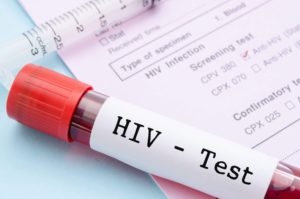Comprehensive planning and data stockpiling by state officials is now a national case study on how to effectively meet the needs of rural residents with HIV.
The details are part of a report by the U.S. Department of Health and Human Services, “Improving Health Outcomes Through Data Utilization,” which highlights six regional initiatives under the Ryan White HIV/AIDS Program. Work by the Iowa Department of Public Health, which receives a Part B grant through the Ryan White program, is Chapter One.
The prominent placement is partly because Iowa is unusual in the world of HIV/AIDS outreach and care services. That is, about a third of state residents living with HIV/AIDS aren’t in urban areas. They’re scattered throughout the state, many in distinctly rural communities.
These individuals often feel stigma regarding their disease more intensely due to their lack of a local support system. They also can face added health challenges because they must travel to access services.

The Iowa program, according to the HHS report, has “effectively used Part B funds to bring HIV care and support services to both urban and rural populations” while demonstrating the “innovative ways the program uses data to improve care.”
Part B is one of the more flexible grants offered. Recipients are allowed to decide specific services at the local level (based on demonstrated need and available funding). Data must be gathered to show that support services are linked to medical outcomes, and at least 75 percent of funding must be used for core medical services.
At the center of Iowa decisions is the state’s Comprehensive HIV Plan, developed by a 55-member committee following statewide discussion. The plan paints a picture of the current Iowa landscape, brainstorms what the landscape should look like, and then provides strategies to connect the two. It also is connected to the National HIV/AIDS Strategy of reducing new infections, increasing access, improving health outcomes and easing health disparities.
“We started a push in 2012, expanding our focus from providing core and support services to integrating services along the HIV care continuum,” Program Manager Holly Hanson explained in the national case study.
Much of IDPH’s work centers on data. Who is being served? What level of contact does that person need to be healthy? Who has fallen through the cracks and why?
Case management services are now provided through a tier-based system, providing the most contact to clients who need the most support.
Comprehensive data has been gathered regarding those who have disengaged, and the group is working on outreach strategies to reach Iowans not receiving care.
This focus on solid data has resulted in added investment.
“One of the things Iowa has done that maybe our rural and frontier state counterparts haven’t been able to do is hire the staff necessary to do the work,” Hanson said.
IDPH success isn’t just good news for rural residents living with HIV/AIDS. It’s one more proven strategy that can be adopted by other programs working to address needs across rural communities.
This column by Lynda Waddington originally published in The Gazette on March 25, 2017. Photo credit: Fotolia
